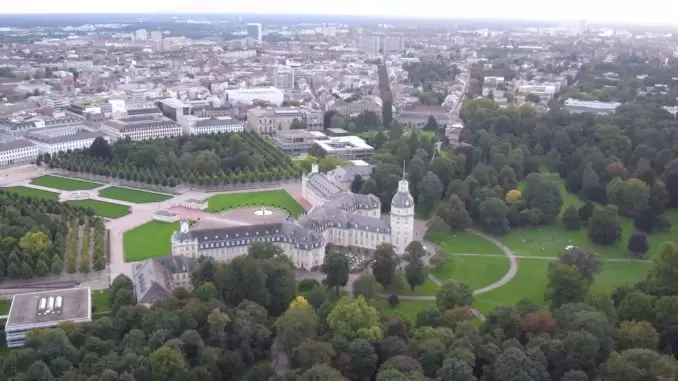
Views: 215
Changes in environmental conditions mean stress for urban green spaces. KIT researchers are working on strategies to maintain their vitality.
Courtesy KIT: Healthy trees can effectively cool cities during hot periods. In the future, however, they must be particularly resilient to the effects of climate change. Technology monitoring researchers at the Karlsruhe Institute of Technology (KIT) are developing strategies to adapt the maintenance and management of urban green to new challenges. They work together with the citizens and those in charge in Karlsruhe and Rheinstetten. The “GrüneLunge” project is financed by the Federal Ministry of Education and Research (BMBF) with a total of 1.4 million euros.
Be along streets, in residential areas, parks, gardens, cemeteries or even in industrial areas: green lungs, smaller trees and forests are more than beautiful for city dwellers. As “green lungs,” they provide a wide range of ecosystem services to growing cities: they purify the air by binding CO 2 particles and exhaust. At the same time, they provide shade and cool the environment by releasing moisture. All these are properties that are of great importance in the face of the advance of climate change.
But trees are increasingly under stress in urban environments. “Growing and ever-growing cities, pollution and mechanical and chemical damage threaten the existence and vitality of urban forests,” says Dr. Somidh Saha, forest scientist at the Institute for Evaluation and Systems Analysis Technology (ITAS) at KIT and head of the three-year research project has recently launched “Inter and transdisciplinary development of strategies to increase the resistance of trees in growing cities and urban areas (green lung).”
In addition, climate change is yourself: observations suggest that trees that do not grow in their natural but built environment are more susceptible to the effects of global warming – such as heat waves, droughts, storms, or heavy rains. Ecophysiological processes, such as photosynthesis and transpiration, ie evaporation of water through foliage, may in the future lose their intensity, especially in native tree species.
More resilience to the green lungs of cities
This is where the project begins. KIT scientists want to develop short- and long-term strategies to make urban forests more resilient and, ideally, to improve ecosystem services. To this end, the ITAS team coordinates a consortium of the interdisciplinary project, which is funded with a total of 1.4 million euros in the BMBF’s “City of the Future” Program. The partners are the Center for Medical and Meteorological Research in German Weather (DWD) and the Forest Research Institute Baden-Wuerttemberg (FVA) in Freiburg and the cities of Karlsruhe (Department of Parks and Forest Department) and Rheinstetten (building authority) .
“Over the next three years, we want to better understand how to change the services of growth and ecosystems of city trees and urban forests under the influence of air pollution and drought,” Saha project explains. Measuring campaigns in Karlsruhe and elsewhere should clarify this. Based on this, the researchers want to investigate how the heat load in urban areas can be reduced more effectively by using trees. The focus here is, on the one hand, on the selection of tree species, which are particularly suitable because of their specific properties. On the other hand, researchers want to look at larger contexts while developing green and economic greening concepts for neighborhoods, parks, streets, and urban forest areas. Finally, the knowledge acquired in Karlsruhe and Rheinstetten should also be implemented.
The research is accompanied by several transdisciplinary activities. The green lung project aims to initiate a transfer of dialogue and knowledge among citizens, foresters, scientists and policymakers from Karlsruhe and Rheinstetten raising awareness of the importance of a green city with a healthy population of plants. Several activities are in particular around the system operated by ITAS real laboratory “future Quartier – Laboratory City” and the “Future Space” in Karlsruhe Oststadt planned.
As “The Research University of the Helmholtz Association,” the KIT creates and communicates knowledge for society and the environment. The goal is to contribute significantly to the global challenges in energy, mobility and information fields. About 9,300 employees work together on a broad and disciplines in the natural sciences, engineering, business, humanities and social sciences. Its 25,100 students prepare the KIT for responsible tasks in society, economics and science through a research-oriented university degree program. The KIT innovation activity fills the gap between knowledge and application for social benefit, economic prosperity and preservation of our natural livelihoods.
Leave a Reply